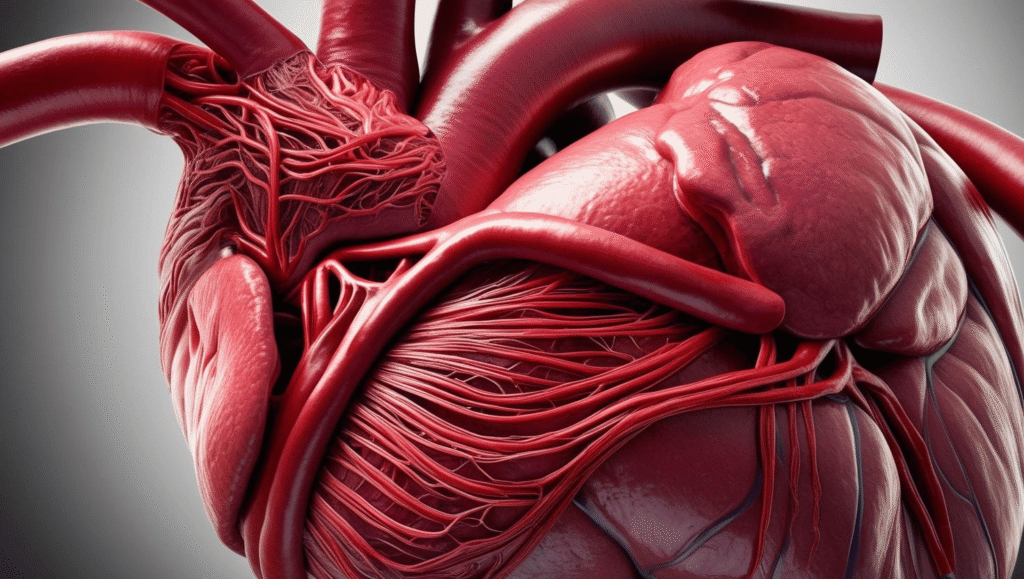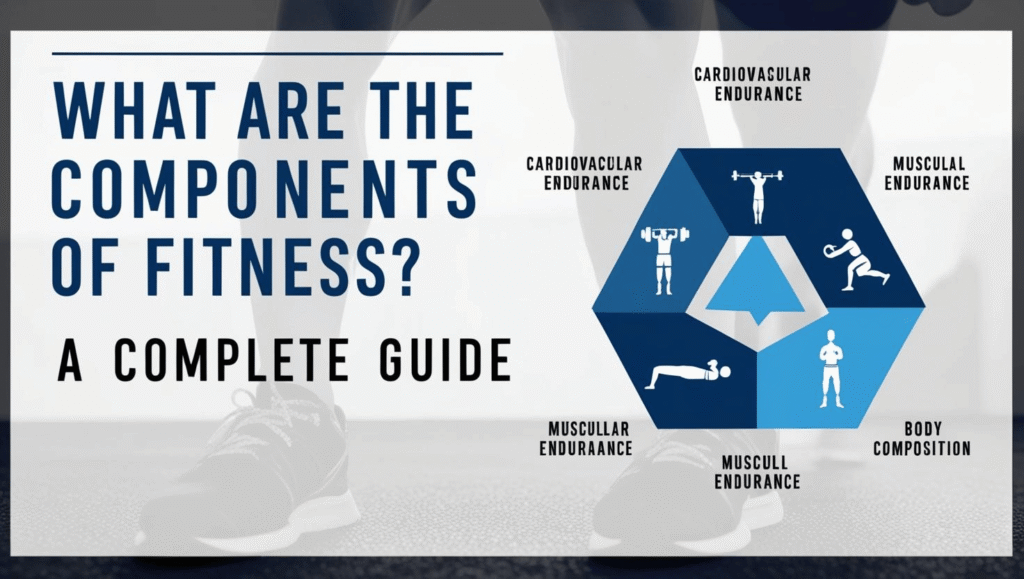Can cardio exercises truly benefit individuals across all age groups, from young children to older adults? Unlocking the secrets to intergenerational fitness might just be the key to a healthier, more active lifestyle for the entire family.
Cardiovascular (cardio) training is essential for maintaining overall health and well-being, regardless of one’s age. Whether you’re a parent looking to instill healthy habits in your children or a senior seeking to maintain independence and vitality, this article will explore the importance of regular cardio exercise, highlight age-appropriate activities, and provide practical tips for incorporating cardio into your daily routine.
Key Takeaways
- Cardio exercises offer benefits for individuals of all ages, from children to seniors.
- Age-appropriate cardio activities can be fun and engaging for both youth and older adults.
- Incorporating cardio into daily routines can help maintain overall health and independence.
- Strength training should complement aerobic exercises for a well-rounded fitness regimen.
- Safety considerations and proper warm-up techniques are crucial for different age groups.
The Importance of Cardio for All Ages
Engaging in regular cardio exercise offers a wide range of benefits for individuals of all ages. For children, it can help improve cardiovascular health, build endurance, and promote overall physical fitness. Children should be active for at least 180 minutes (three hours) a day with physical activity spread throughout the day, and they should engage in moderate to vigorous physical activities for at least 60 minutes daily, with vigorous intensity activity 3 days a week. Higher intensity and resistance activities should also be done three days a week to strengthen muscles and bones. Children should avoid spending long periods sitting without movement to reduce the risk of health issues.
Benefits of Regular Cardio Exercise
For seniors, cardio can help reduce the risk of heart disease and stroke, improve circulation, and enhance mobility. Adults aged 65 and over should aim to do at least 150 minutes of moderate intensity activity a week or 75 minutes of vigorous intensity activity. They should also engage in activities that improve strength, balance, and flexibility on at least 2 days a week. Exercises to improve strength, balance, and flexibility can help older adults feel stronger and more confident on their feet.
Overcoming Age-Related Fitness Challenges
However, age-related factors like decreased muscle mass and joint issues can present unique challenges when it comes to maintaining an active lifestyle. Muscle-strengthening activities can include carrying heavy shopping bags, yoga, pilates, and lifting weights. Older adults are encouraged to reduce time spent sitting or lying down and break up long periods of inactivity with physical activity.
Despite these challenges, the importance of cardio for all ages cannot be overstated. By incorporating regular cardio exercise into their routines, individuals of all ages can enjoy the numerous physical and mental health benefits it offers. Unfortunately, 31% of adults and 80% of adolescents do not meet the recommended levels of physical activity. The global target is to reduce physical inactivity in adults and adolescents by 10% by 2025 and 15% by 2030.
“Regular cardio exercise is essential for maintaining good health and fitness, regardless of age. By making it a priority, individuals can improve their overall well-being and enjoy an active, fulfilling lifestyle.”
Age-Appropriate Cardio Activities for Children
Incorporating age-appropriate cardio activities is crucial for children’s physical development and overall well-being. The U.S. Department of Health and Human Services (HHS) recommends that children and adolescents ages 6 to 17 get at least one hour of moderate to high-intensity aerobic exercise every day. Engaging in a variety of fun and engaging workouts for kids can help them meet these guidelines and foster a lifelong love of physical activity.
For the youngest children, ages 3 to 5, the recommendation is to be physically active throughout the day, promoting bone health and healthy weight maintenance. Swimming can be introduced to children between 6 months and 3 years for water safety, with formal swimming lessons usually starting around ages 4 or 5. By age 6, children can participate in activities like hitting a pitched baseball, passing soccer or basketball, doing gymnastics routines, and riding a bike confidently.
As children grow older, their physical abilities and preferences evolve. Strength-training activities for children should be part of a 60-minute exercise routine on at least three days of the week. Hand-eye coordination significantly improves in children ages 9 to 11, enabling them to excel in activities like baseball, golf, and tennis. Encouraging competition is acceptable in this age group, with a focus on participation rather than just winning.
Adolescents aged 12 to 14 may shift focus from organized sports to muscle-building exercises, but heavy weight lifting is discouraged until puberty begins. Using stretchy tubes and body-weight exercises like squats and pushups are recommended for strength-building without risking bones and joints. Once puberty is reached, teenagers can start weight training with proper form to prevent muscle damage and fractures.
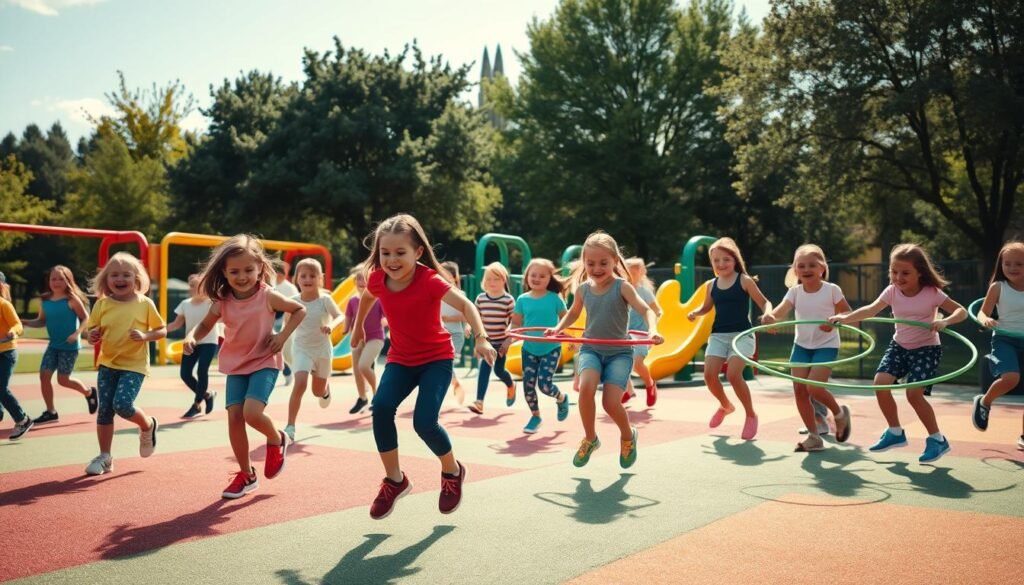
Regardless of age, it’s essential to introduce a variety of kid-friendly cardio exercises that are both effective and enjoyable. By incorporating fun elements, such as music, interactive games, and dance, children are more likely to stay motivated and engaged in their cardio routines.
Staying active at any age helps promote overall health and long-lasting habits. By providing age-appropriate cardio activities for children, parents and caregivers can ensure that kids develop a strong foundation for lifelong fitness and well-being.
Low-Impact Cardio for Seniors
As individuals age, high-impact exercises can become increasingly challenging and potentially harmful. Low-impact cardio activities, such as brisk walking, swimming, cycling, and water aerobics, offer senior-friendly alternatives that can still provide cardiovascular activities for older adults without putting excessive stress on the joints. These activities can help seniors maintain their fitness levels while reducing the risk of injury and discomfort.
The NHS Live Well recommends that adults aged 65 and over should aim to be physically active every day and do at least 150 minutes of moderate intensity activity a week or 75 minutes of vigorous intensity activity if already active, or a combination of both. Low-impact cardio exercises, like those mentioned, can help seniors meet these recommended guidelines and enjoy the many benefits of regular physical activity.
For those with specific health conditions, such as heart or circulatory conditions, it is advised to consult with a healthcare professional before engaging in any new exercise regimen. Individuals with peripheral arterial disease (PAD) can also benefit from walking, which may help alleviate leg pain over time.
In addition to aerobic exercises, it is recommended for seniors to incorporate strength training two to three days a week, with each session involving 10 to 12 repetitions of exercises that challenge the muscles. Balance and flexibility exercises should also be included in the routine two to three days a week to improve flexibility and reduce the risk of falls.
By incorporating a variety of low-impact cardio exercises, seniors can maintain their cardiovascular health, improve their overall fitness, and enjoy an active lifestyle while minimizing the risk of injury.
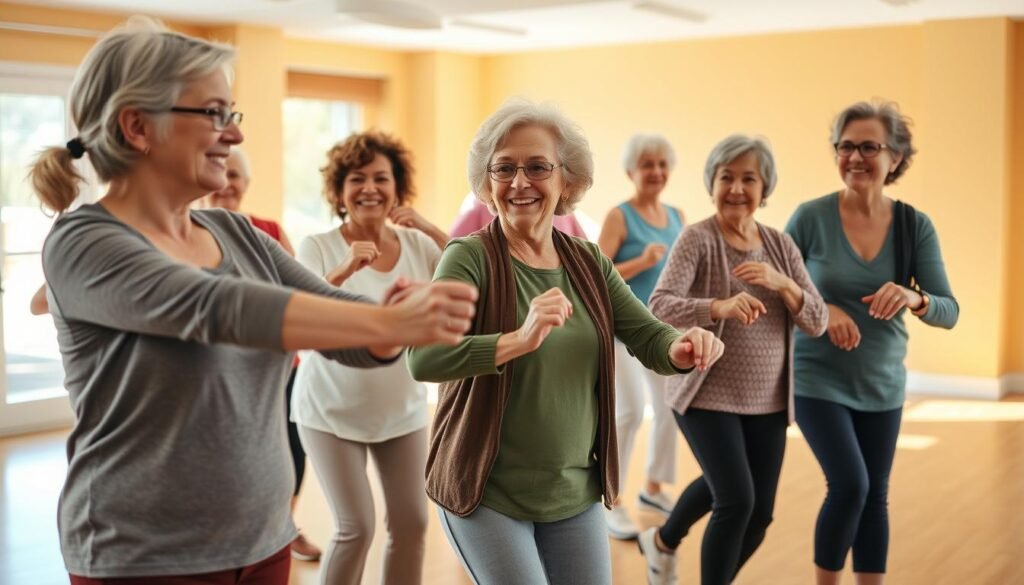
A recent BBC study showed that over a 10-week period, the group who played table tennis experienced an improvement in happiness and an increase in cortical thickness which deals with complex thinking and shrinks with ageing.
Table tennis had shown to improve mental agility and overall well-being in just 10 weeks.
Cardio Training for Children and Seniors
Cardio training is essential for individuals of all ages, from children to seniors. By incorporating age-appropriate exercises and strategies, it is possible to create a comprehensive cardio regimen that caters to the unique needs and abilities of both young and old. This can help foster a sense of community, promote intergenerational bonding, and inspire a lifelong commitment to physical fitness.
For children, cardio activities can be performed in a rhythmic or competitive manner without specified time frames. The recommended cardio exercises for kids range from 30 seconds to 3 minutes with varying rest times, and the repetitions can vary from 10 to 100 per exercise. Engaging in these activities can assist in strengthening bones and muscles, promoting healthy habits.
On the other hand, seniors can benefit from low-impact cardio exercises that are gentle on their joints. Activities like walking, biking, or swimming are recommended in your 50s, with the option to reduce the intensity and exercise more often if experiencing more aches and pains. During your 70s and beyond, maintaining strength and flexibility through activities like water aerobics, walking, or dancing, is essential, and resistance bands can be used for muscle strength maintenance.
By creating multigenerational fitness routines, families can engage in cardio training together, promoting physical activity and fostering a sense of community. Group cardio classes catering to beginners, seniors, or those getting back into exercise are available, offering a diverse range of options such as Group Cycle, HIIT, Aqua Aerobics, and more. These classes not only help improve overall fitness levels but also provide an opportunity to connect with like-minded individuals, creating a supportive and motivating environment.

Incorporating cardio training into daily routines, whether it’s through individual exercises or group activities, can greatly benefit individuals of all ages. By embracing the power of multigenerational fitness, we can encourage a lifelong commitment to physical well-being and foster a stronger, more connected community.
Incorporating Cardio into Daily Routines
Integrating cardio into one’s daily life can be a game-changer in maintaining a healthy and active lifestyle. By finding practical ways to incorporate physical activity into everyday tasks, individuals can gradually build cardio into their routines. Starting with a 30-minute workout session five or more days a week, raising the heart rate throughout the activity, is advised by experts. The initial step for beginners is opting for moderate-intensity cardio to allow muscles and joints to adjust to the movements.
Tips for Staying Motivated
Staying motivated to make cardio a consistent habit can be challenging, but there are strategies that can help. Setting achievable goals, tracking progress, and involving friends or family members can all contribute to long-term adherence to a cardio-based fitness regimen. Cardiovascular exercise may also help reduce the risk of dementia and Alzheimer’s disease, while also providing numerous other health benefits, such as improving joint health, managing arthritis discomfort, and reducing the risk of Type 2 diabetes.
To make cardio a lifelong habit, it’s important to find activities that you genuinely enjoy. Whether it’s walking, cycling, or dancing, choosing an exercise that you find fun and engaging can make it easier to stick to a routine. Incorporating cardio into daily tasks, such as taking the stairs instead of the elevator or going for a brisk walk during your lunch break, can also help increase overall physical activity levels.
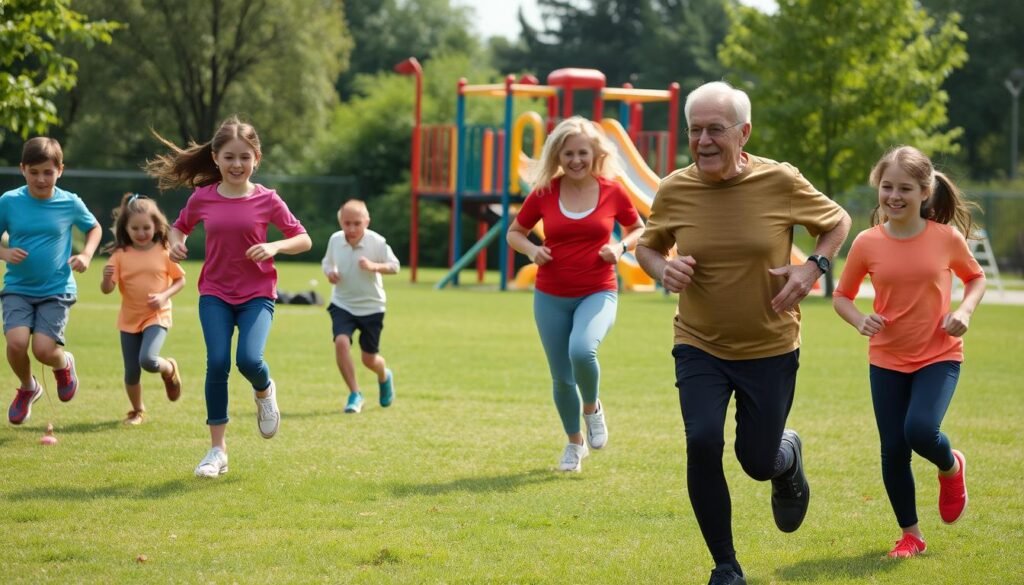
Consistency is key when it comes to incorporating cardio into your daily life. Whether it’s a 30-minute workout or a series of short, active breaks throughout the day, every bit of physical activity counts. By making cardio a habit, you’ll not only improve your physical health but also experience benefits such as better sleep, increased energy, and improved mood.
“Cardio exercise is one of the most effective ways to improve overall health and well-being. By finding creative ways to incorporate it into your daily routine, you’re taking an important step towards a healthier, more active lifestyle.”
Safety Considerations for Different Age Groups
When engaging in cardio activities, it is crucial to prioritize safety, especially for individuals in different age groups. Children and seniors may have unique physical needs and limitations that require special consideration. Children over 5 years old should aim to do 60 minutes of physical activity each day, while children aged 5 to 12 years should do at least 60 minutes of moderate to vigorous physical activity each day. The Australian Government recommends that children aged 5 to 17 years should spend no more than 2 hours a day in front of a screen for entertainment, and children aged 2 to 5 years should spend no more than 1 hour a day in front of a screen. For seniors, everyday activities count as exercise, and starting small and gradually increasing activity levels is beneficial.
Proper Warm-Up and Cool-Down Techniques
Proper warm-up and cool-down techniques, such as gentle stretching and low-intensity movements, can help prepare the body for exercise and prevent injuries. Children should do vigorous exercises and strengthening exercises at least 3 days each week, while seniors should engage in activities that work the cardiovascular system to maintain heart, lung, and brain health. Additionally, consulting with healthcare professionals, such as physicians or physical therapists, can provide valuable guidance on safe and effective cardio practices for specific age groups.
By prioritizing safety, implementing proper warm-up and cool-down techniques, and seeking professional advice, individuals of all ages can enjoy the benefits of cardio training while minimizing the risk of injuries.
“Regular physical activity for seniors is encouraged, with flexibility in intensity based on individual health needs.”
| Age Group | Recommended Daily Physical Activity | Recommended Weekly Muscle-Strengthening Activities |
|---|---|---|
| Children (5-12 years) | At least 60 minutes of moderate to vigorous physical activity | At least 3 days |
| Older Adults (65+ years) | At least 150 minutes of moderate intensity activity or 75 minutes of vigorous intensity activity | At least 2 days |
Building Multigenerational Fitness Routines
Creating fitness routines that cater to multiple generations can be a rewarding and effective way to promote building multigenerational fitness routines, involving the whole family in physical activity, and intergenerational fitness. By incorporating age-appropriate cardio exercises, strength training, and flexibility activities, families can engage in shared fitness experiences that accommodate the needs and abilities of all members. This can foster a sense of community, inspire healthy habits, and create lasting memories.
Involving the Whole Family
Encouraging the whole family to participate in physical activity together can have numerous benefits. Building multigenerational fitness routines brings different age groups together to benefit from purposeful activities, enhancing understanding and respect between generations. Intergenerational practice focuses on promoting cohesion within communities, fostering inclusive environments, and leveraging the positive resources that younger and older individuals offer each other.
The collaboration between different generations in fitness activities leads to mutual benefits and strengthens relationships, encouraging inclusion and understanding within communities. Examples of successful intergenerational practices include students in education programs interacting with elderly individuals in care homes, leading to increased physical activity levels among older adults.
Implementing intergenerational fitness programs leads to positive outcomes, such as improved confidence among students working with older individuals, enhanced relationships between different age groups, and increased physical activity levels meeting recommended guidelines. Successful intergenerational projects result in valuable experiences for participants, expanding their perspectives and promoting relationships that benefit the overall well-being of all involved.
Organizations, such as Generations Working Together, play a vital role in supporting and promoting intergenerational work by providing training opportunities, resources, and fostering community networks across Scotland.
| Age Group | Recommended Physical Activity |
|---|---|
| Children (6-17 years) | At least 60 minutes of moderate-to-vigorous physical activity daily |
| Adults | Regular physical activity can decrease the risk of chronic diseases by up to 50% and reduce the risk of premature death by 30% |
| Seniors | Regular physical activity can maintain independence while reducing the risks of developing heart diseases and dementia |
“Building multigenerational fitness routines that involve the whole family can foster a sense of community, inspire healthy habits, and create lasting memories.”
Balancing Cardio with Other Exercises
While cardio is an essential component of any comprehensive fitness routine, it is crucial to maintain a well-rounded approach that incorporates other types of exercise, such as strength training and flexibility work. This balanced approach can help individuals of all ages improve overall physical fitness, enhance muscular strength and endurance, and promote better overall health and wellness.
For children, a balanced fitness routine should include a combination of cardio, strength-building exercises, and activities that improve flexibility and coordination. By engaging in a variety of exercises, children can develop a strong foundation for lifelong health and fitness.
Similarly, seniors can benefit greatly from a comprehensive fitness program that combines cardio, strength training, balance exercises, and flexibility work. This well-rounded approach can help older adults maintain independence, prevent falls and injuries, and manage chronic health conditions.
When designing a fitness routine, it’s important to consider the specific needs and abilities of the individual, whether they are children, adults, or seniors. By incorporating a diverse range of exercises, individuals can achieve optimal physical fitness, improved overall health, and a greater sense of well-being.
In conclusion, while cardio is essential, a comprehensive fitness routine that balances cardio with other exercises, such as strength training and flexibility work, can provide numerous benefits for individuals of all ages. By embracing a well-rounded approach to fitness, individuals can achieve their health and wellness goals and enjoy a higher quality of life.
Conclusion
In conclusion, cardio training is a vital component of a healthy and active lifestyle for individuals of all ages, from children to seniors. By incorporating age-appropriate activities, addressing unique challenges, and fostering a sense of community through multigenerational fitness routines, individuals can reap the numerous benefits of regular cardiovascular exercise and maintain optimal physical and mental well-being throughout their lives.
The data showcases the remarkable improvements that children with cerebral palsy experienced after a 12-week cardiovascular endurance program, including increased distance covered in a six-minute walk, decreased resting heart rate, and enhanced VO2 max. Similarly, aerobic and resistance exercises have been proven effective in improving BMI, reducing body fat percentage, and positively impacting various cardiovascular health markers in both children and seniors.
Furthermore, the guidelines outlined in the research emphasize the importance of incorporating different types of physical activities, such as endurance, flexibility, and strength training, to achieve optimal health benefits. By making cardio training a consistent part of their routines, individuals of all ages can improve their physical fitness, enhance their overall well-being, and enjoy a more active and fulfilling lifestyle.
FAQ
What are the benefits of regular cardio exercise for individuals of all ages?
How can individuals overcome age-related fitness challenges when it comes to cardio training?
What are some age-appropriate cardio activities for children?
How can seniors incorporate low-impact cardio into their fitness routines?
How can families create fitness routines that cater to multiple generations?
What are some tips for staying motivated and incorporating cardio into daily routines?
What safety considerations should be taken when engaging in cardio activities for different age groups?
Source Links
- No title found
- Staying active
- Exercise for children and young people
- Physical activity guidelines for older adults
- Physical activity
- Fitness and Exercise for Kids by Age Group
- Child Activity: An Overview
- Physical activity guidelines
- 3 exercises that are best for heart health
- Fitness For Seniors – Low Impact Cardio And Strength Training
- At-home cardio workouts for adults and kids | Better UK
- Sports and Exercise at Every Age – familydoctor.org
- Cardio Workout Classes Near Me | Better
- Cardio Exercises Benefit More Than Just Your Heart
- American Heart Association Recommendations for Physical Activity in Adults and Kids
- Safe exercise for children
- No title found
- Exercise Routines for Every Age: Family Fitness that Bridges Generations
- Aerobic Exercise Combination Intervention to Improve Physical Performance Among the Elderly: A Systematic Review
- Balance exercises: 13 Moves with Instructions
- Effect of Cardiovascular Endurance Training on the Exercise Capacity and Endurance in Children With Cerebral Palsy
- Effects of aerobic exercise and resistance exercise on physical indexes and cardiovascular risk factors in obese and overweight school-age children: A systematic review and meta-analysis
- Systematic review of the health benefits of physical activity and fitness in school-aged children and youth – International Journal of Behavioral Nutrition and Physical Activity

